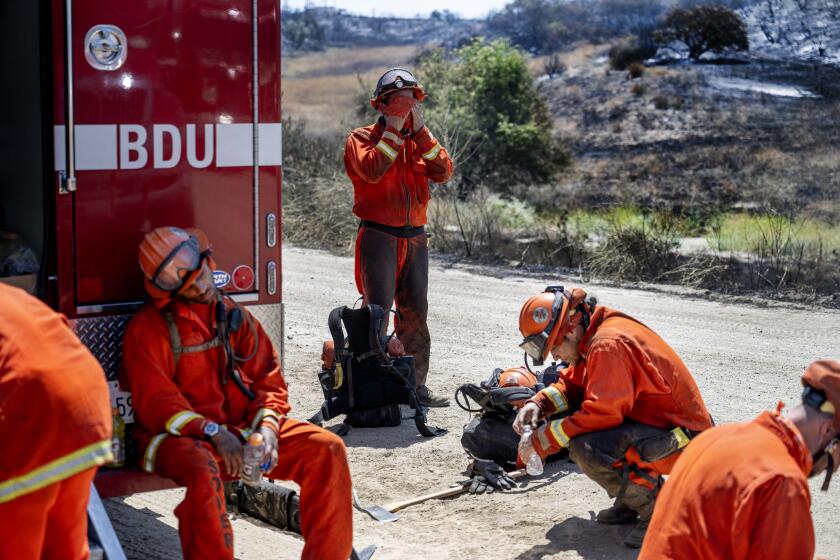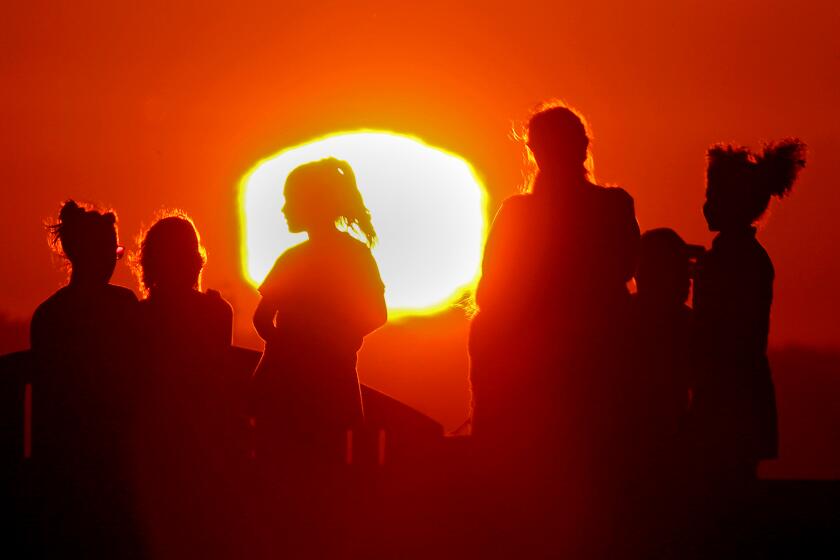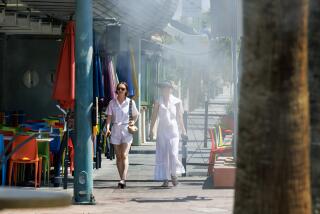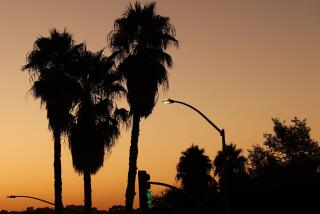Surviving Death Valley at 128 degrees ‘like a blow-dryer in my face’
- Share via
Death Valley temperatures soared to 128 degrees Sunday, breaking the daily record of 127 degrees set in 2005 and 1972. It was expected to hit 125 on Monday.
- Share via
DEATH VALLEY NATIONAL PARK, Calif. — An unfathomable heat descended here on Monday, the hottest place in a rapidly warming world. At the Furnace Creek Visitor Center, a digital thermometer read 123 degrees and counting — within striking distance of the hottest temperature ever recorded on planet Earth.
By midday, the canyons and gorges of the vast park near the border of Nevada shimmered beneath the white-hot sun, but the relentless, eyeball-stinging heat wasn’t enough to stop visitors from braving the danger.
“It feels like a blow-dryer in my face,” said Ross Nikides, 31, who had stopped in Death Valley as part of a three-week road trip to see several national parks. “It’s the hottest I’ve ever felt.”
The park on Sunday had soared to 128 degrees, breaking its daily record of 127 degrees set in 2005 and 1972, according to the National Weather Service. It was expected to reach at least 125 on Monday.
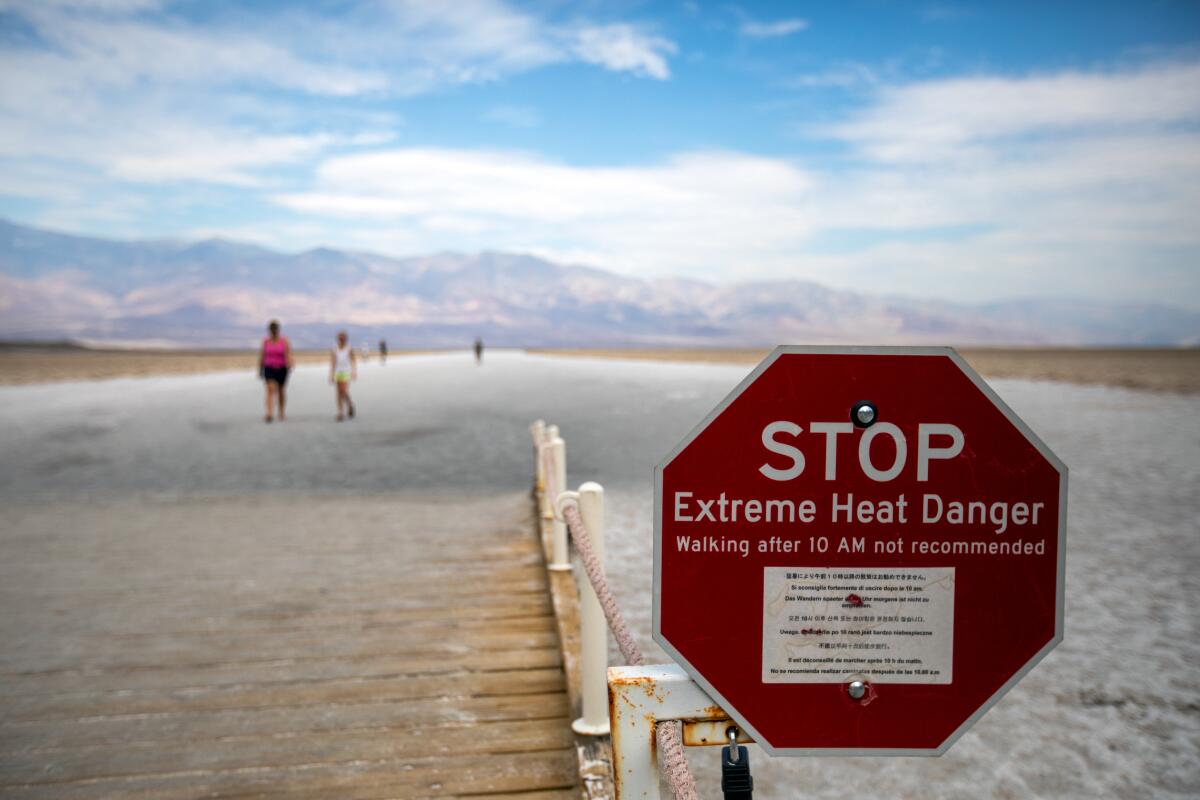
The heat can be a killer. Every year, tourists seeking its expansive beauty suffer automobile breakdowns, stray from set paths or become otherwise stranded, and quickly succumb to the elements. Earlier this month, a man was found dead in his car just 30 yards from North Highway, apparently a victim of 126-degree temperatures the day prior.
Southern Californians can expect another day of hot weather as a heat wave covers the region, bringing triple-digit temperatures and increased fire danger.
The current sizzling temperatures come as a high-pressure heat dome hovers over the American Southwest, driving large swaths of California, Arizona and Nevada well into the triple digits.
“NOT YOUR TYPICAL DESERT HEAT,” the National Weather Service proclaimed, warning that the heat wave’s long duration, coupled with high nighttime temperatures, is making conditions particularly dangerous.
“Life-threatening daytime heat and overnight temperatures [are] struggling to fall below 100,” the agency’s Las Vegas office said. “This will result in an extreme risk of heat related illness for anyone exposed to the heat for a prolonged period.”
But Death Valley — a long, narrow basin that plunges far below sea level — is tailor-made to bake. Hot air is trapped by surrounding mountains and circulated like a convection oven.
“It’s amazing — I can’t find the words to describe it,” said Olivier Delecluse, 45, who was visiting the park from France with his wife and two kids.
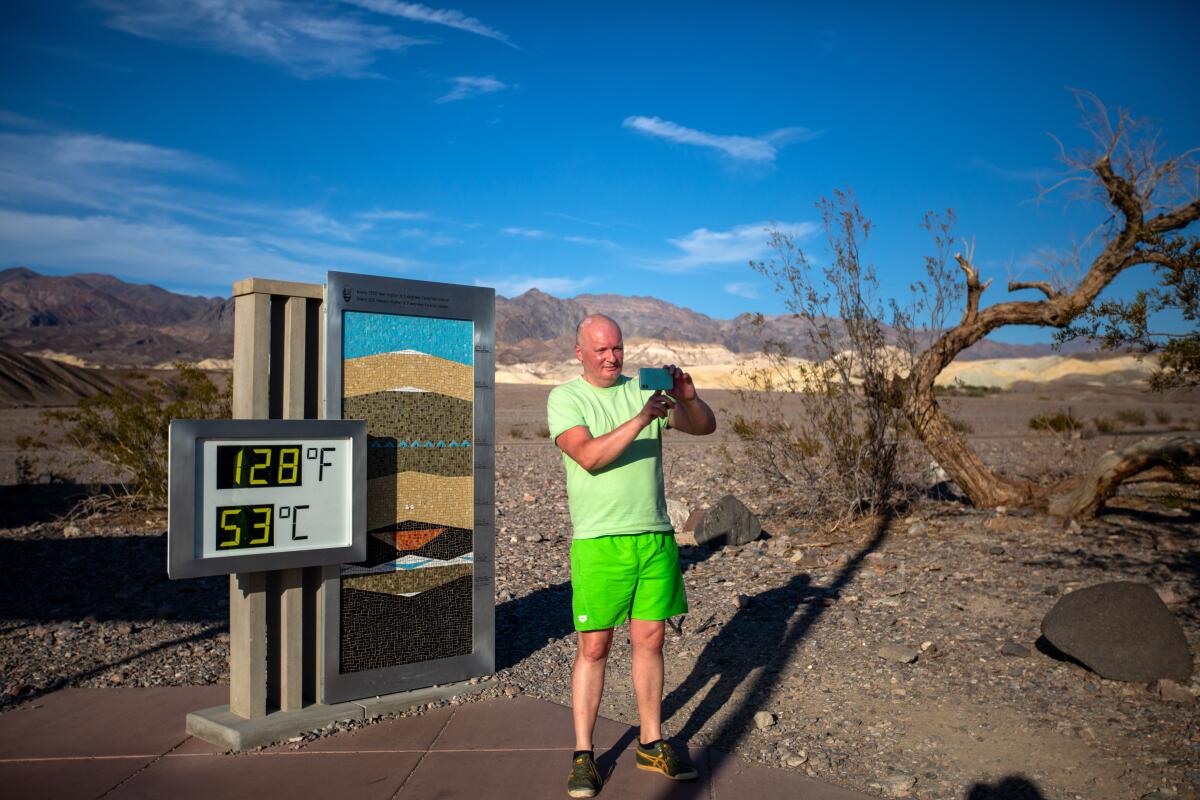
Richard Hancock, 28, had traveled from Birmingham, England, and was en route to Las Vegas with a friend’s bachelor party. The group had sojourned to Badwater Basin, the park’s lowest point and the lowest point in North America, which sits 282 feet below sea level.
“It’s like standing in front of an open oven,” he said of the heat. “I was a bit nervous — is it safe? Is it dangerous? I’m a bit scared of getting a flat tire.”
Sunday’s 128-degree reading was just shy of the 134-degree world record set in 1913, park officials said.
That record has been disputed, with some doubting its authenticity due to outdated tools and record-keeping, but the World Meteorological Organization and the National Weather Service say it still stands.
The park’s extreme temperatures draw heat-seekers from around the world who come to “know how it feels, say they survived,” said public information officer Giovanna Ponce. Dozens of people came to take pictures with the thermometer at the visitor center Sunday and Monday.
Ponce noted that when air temperatures climb to 120 or higher, surface temperatures can sizzle even more, with the asphalt capable of climbing above 200 degrees.
And the hots will keep getting hotter as the burning of fossil fuels continues to heat the planet. Seven of Death Valley’s hottest summers on record have occurred in the last 10 years, Ponce said.
The heat is hard to fathom even for Angelenos baking in temperatures in the high 90s and 100s this week.
California’s first heat wave of the year could last into next week. Here are some tips on how to stay safe and cool during hot weather.
Christophe Boetsch, who was visiting Death Valley from Alsace, France, with his wife and three sons, said he had experienced desert heat in Africa, but never anything like the heat on Monday.
Phoenix resident Corinne Yee said that she’s also no stranger to extreme heat, but that the hot air whipping through Badwater Basin was in a class of its own.
Yee and her family were wearing cooling armbands and had packed ample water and sunscreen in their car, and, like most visitors, were keeping outdoor time to a minimum.
The visit is part of a larger road trip, she said. “We’re going up to San Francisco where it’s cooler.”
More to Read
Sign up for Essential California
The most important California stories and recommendations in your inbox every morning.
You may occasionally receive promotional content from the Los Angeles Times.

